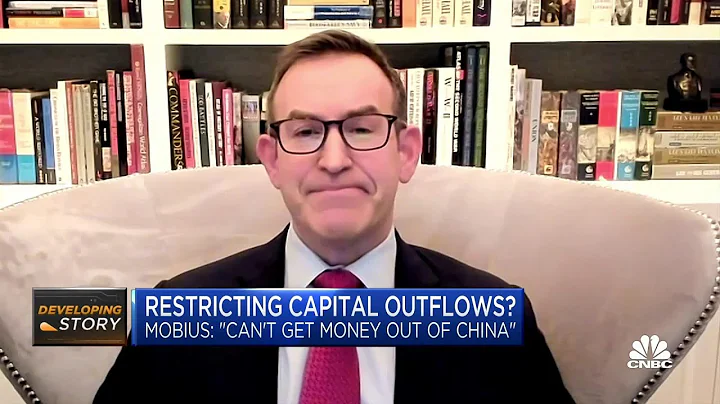In the early morning of May 5th, Beijing time, after a two-day closed-door meeting, the Federal Reserve announced an interest rate increase of 350 basis points:
The United States' benchmark interest rate was raised to 0.75%-1%;
With this At the same time, the Federal Reserve also announced that it would begin reducing its $8.9 trillion balance sheet starting on June 1.
In the first three months, the monthly contraction was US$30 billion in national debt and US$17.5 billion in MBS. After that, it expanded to US$60 billion in monthly national debt and US$35 billion in MBS.
These policies were completely within the market’s expectations. The more aggressive interest rate hike of 75 basis points was denied, and the intensity of balance sheet reduction was also lower than expected. The Fed’s statement and wording after the meeting were also far higher than previous market expectations. More moderate...
interpreted the U.S. dollar's substantial interest rate hikes and balance sheet reduction in the past half year, and finally the boots have landed.


U.S. stocks rose sharply after the meeting, setting the biggest rise on a rate hike day in 44 years.
In addition to monetary policy, in the short meeting statement, Powell's statement on the U.S. economy was even more confident:
"If we bring supply and demand at least closer than they are now, this will give us the opportunity to reduce There is a way to achieve inflation and falling wages without causing an economic slowdown, recession, and a sharp increase in unemployment."
"It should be noted that the financial situation of households and businesses is very good..., Businesses are in good financial shape. The labor market is very, very strong, so we look very far away from a downturn. "
"Looking at the labor market, if you look at the unemployment rate and people looking for work, there are a lot of jobs. ,... It is a good situation for workers, including job changes and salary increases. The economy is strong and there is no sign that it is close to recession. "
In other words, the Fed under Powell is not at all. There is concern that raising interest rates could trigger a recession in the U.S. economy.
The sharp rise in US stocks after the meeting also proves that the market believes in Powell's judgment.
The U.S. economy is in recession, why is the market not worried at all?
You must know that the first-quarter GDP growth rate of the United States just announced a few days ago was far lower than expected, reaching -1.4%. Under such circumstances, why are the market and Powell so confident?
Of course they have a reason.
I have written 3 articles about the United States before:
-1.4% represents stagflation? You don’t understand U.S. economic data at all!
China or the United States, whose economy is more fat?
inflation of , has it peaked?
Three articles introduced in detail the differences in GDP statistics between China and the United States, the differences in GDP data between China and the United States, and the current and future inflation conditions in the United States. The conclusion is:
Although the overall GDP of the United States is far more "puffy" than that of China ”, but in terms of economic growth in the first quarter of 2022, the United States’ seemingly -1.4% growth rate is actually much better than China’s 4.8% growth rate.
According to the definition of the National Bureau of Economic Research (NBER), the so-called economic recession refers to "a significant decline in economic activity." "During this period, economic activity within the entire economy has declined and continues. More than a few months”.
From an indicator perspective, the main manifestation of the economic recession is the decline in five relevant macroeconomic indicators: real GDP, income, employment, manufacturing and retail sales.If indicators are used to define "recession", it generally means that the GDP growth rate has been negative for two consecutive quarters or more, while the unemployment rate has increased significantly, and both the manufacturing index and retail sales have declined significantly...
7 2021 On March 19, NBER issued a statement confirming that the U.S. economy fell into recession in the first quarter of 2020. NBER also judged that this recession lasted only two months ( February to April 2020 ), which was the shortest in the history of the United States. Recession - This recession follows a 10.5-year expansion in the U.S. economy, the longest since records began in 1854.
The 2020 U.S. economic recession is characterized by a 31.4% plunge in U.S. GDP in the second quarter when the epidemic first took hold. But in the following time, the Federal Reserve and the U.S. government increased output by 33.4% through various monetary and fiscal policy stimulus. GDP rebounded the most in history, and the recession ended quickly.
The table below is the previous economic recessions in the United States since 1854 as defined by NBER.

Why do we judge that the U.S. economy will not fall into recession again in the short term?
NBER uses five indicators to define a "recession":
Real GDP, income, employment, manufacturing and retail sales.
We might as well look at them one by one.
Based on the previous article, we all know that the GDP of the United States is calculated using the expenditure method . Private sector consumption, private sector investment, government expenditure and net exports are the four major components of the US GDP.
The table below is the contribution source of each GDP growth rate in the United States since the first quarter of 2020 summarized by Ping An Securities Research Institute.

From the table, we can see that U.S. consumption will remain strong in the first quarter of 2022, contributing as much as 1.83 percentage points to GDP growth. The reason why the real GDP of the United States was negative in the first quarter was because of the huge drag on net exports (-3.2%), which directly turned the U.S. GDP growth rate into negative value; there were also government spending cuts, which also lowered the GDP growth rate. US GDP growth.
As the world's largest trade deficit country, net exports have long been a drag on US GDP growth. From 2015 to 2019, the average month-on-month pull rate for GDP was -0.2%.
Due to significant improvements in port congestion in the first quarter of 2022, the average anchoring waiting time at the Port of Los Angeles has dropped from more than 20 days at the beginning of the year to about 3 days currently. In order to compensate for the inventory reduction caused by US port congestion in the second half of last year, it is conceivable that US imports surged. This also led to the US trade deficit reaching a new high and becoming the biggest drag on GDP growth.
However, as corporate inventories have been replenished, coupled with the significant appreciation of the U.S. dollar relative to other currencies in the past month or so, U.S. net exports will no longer have such a deep drag on GDP in the second quarter of 2022.
In the composition of US GDP, consumption accounts for more than 70%, and service consumption is the key. As long as consumption does not decline and growth outweighs decline, the possibility of the U.S. economy falling into recession in the short term is extremely low.
As epidemic control is gradually relaxed, service consumption in the United States increased by as much as 4.3% month-on-month in the first quarter of 2022. Service industry consumption, including catering, accommodation, etc., is steadily recovering.
At the same time, the business climate in the United States is high and residents' salary income is growing rapidly, while corporate inventories are still at historically low levels, leading indicators such as new orders remain high, and both supply and demand are booming. All indicators show that the U.S. economy has entered a virtuous cycle. Coupled with the natural recovery of consumption after the relaxation of epidemic prevention and control, the U.S. economy can be described as "full of resilience" in the second quarter. Under such circumstances, U.S. GDP is likely to continue to decline in the second quarter. Very low sex.
Having said that GDP cannot decline, let’s talk about residents’ income.
The income of the American people ( disposable income + income tax ) mainly includes salary income, property income, and transfer payment income. Among them, property income is highly correlated with the prices of stocks, real estate and other assets, and has a relatively limited impact on consumption in the medium term; transfer payment income comes from the government, and is mostly converted into savings, which has limited boost to consumption. Only salary income has a relatively stable trend, with a year-on-year trend. Basically year-on-year or slightly ahead of private consumption year-on-year.
As Powell said at the meeting, because of the strong economy, the number of job vacancies in the United States has been above 10 million for eight consecutive months, continuing to be at a record high. In order to alleviate the "labor shortage", companies have to significantly increase wages to recruit people, so the current salary income in the United States is almost at the highest growth rate in 10 years.

At the same time, the disposable income of American residents has continued to maintain rapid growth in the past year. Coupled with the high savings rate created by the government’s money distribution in the past two years, the American people are now typically wealthy, willful, willing to spend money, and dare to Spend money...
In this case, do you think the income situation of American residents is good?
After talking about income, let’s look at employment.
The unemployment rate in the United States is currently at a historical low of 3.6%. It seems that there is no way to fall, and there is only the possibility of rising. But in fact, it is also because job vacancies are at an all-time high. In recent months, the new non-agricultural employment data in the United States has remained strong, with an average of more than 500,000 people per month...
This represents real-time "employment flow" "The beautiful data shows that we still don’t know how far away we are from an economic recession.

Let’s look at the data on new manufacturing orders and retail sales. They are basically in a head-up stage, with no signs of turning around at all.


It is precisely with the support of the above data that the Federal Reserve has such sufficient confidence that it is not worried that the U.S. economy will fall into a so-called recession.





















